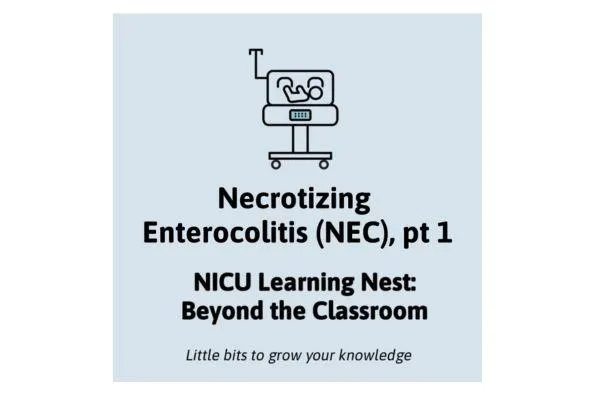
NEC Part 1: Risk factors
NEC for NICU Nurses – Part 1: Risk Factors You Shouldn’t Ignore
Necrotizing Enterocolitis (NEC) is one of the most feared diagnoses in the NICU—for good reason. It can progress quickly, often with devastating outcomes. As NICU nurses, our ability to recognize and understand the risk factors is a crucial first step in prevention and early intervention.
Whether you're brand new to the NICU or a seasoned pro, this quick breakdown is your foundation for smart, proactive care. Let's dive in.
🧠 What Is NEC?
NEC is a life-threatening intestinal disease that affects premature and medically fragile infants. It causes inflammation and, in some cases, perforation of the bowel. Despite decades of research, its exact cause is still unclear—but the risk factors are well established.
⚠️ Key Risk Factors for NEC
1. Prematurity:
No surprise here. Prematurity is the most significant risk factor. The immature gut is more vulnerable to inflammation, poor perfusion, and microbial imbalance.
2. Sepsis and Respiratory Distress:
Systemic inflammation plays a major role. Infants recovering from infections or RDS may be more susceptible to NEC due to compromised perfusion and increased inflammatory mediators.
3. Formula Feeding:
Lack of human milk deprives the gut of protective antibodies, enzymes, and good bacteria. Breastmilk is protective.
4. Congenital Heart Disease (CHD):
Infants with CHD may have reduced gut perfusion, increasing NEC risk, especially post-op.
5. Maternal and pregnancy-related factors may increase NEC risk
Chorioamnionitis (OR = 1.75) – Intrauterine inflammation can affect fetal immune and GI development.
Prolonged rupture of membranes (OR = 1.32) – Raises infection risk.
Maternal hypertensive disorders / preeclampsia – Linked to placental insufficiency and SGA.
No or incomplete antenatal steroids – Associated with immature GI tract.
Intrauterine growth restriction (IUGR) – Decreased perfusion = delayed gut maturation.
Emergency cesarean – Linked in some studies, but data is variable.
🛡️ Protective Factors You Should Know
Breastmilk (donor or maternal)
Antenatal steroids
Probiotics (when approved by unit policy)
Hyperbilirubinemia – yes, some studies suggest mild hyperbili might protect the gut!
📆 Save the Date: NEC Awareness Day is May 17
We’ll continue this conversation with:
Part 2: Signs and symptoms (Including x-rays!)
Part 3: Treatment and Long Term Outcomes
Sources Used:
Cleveland Clinic: NEC Overview
NEC Society: What Is NEC?
ScienceDirect: NEC Reduction QI Program
AAP Pediatrics QI Initiative: NEC QI Study
